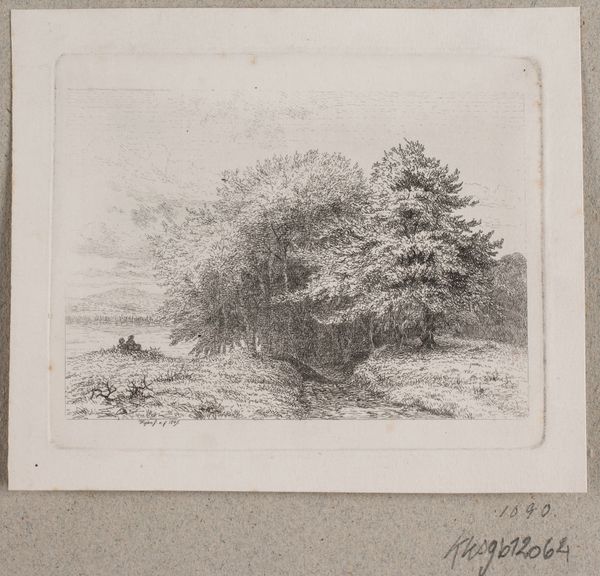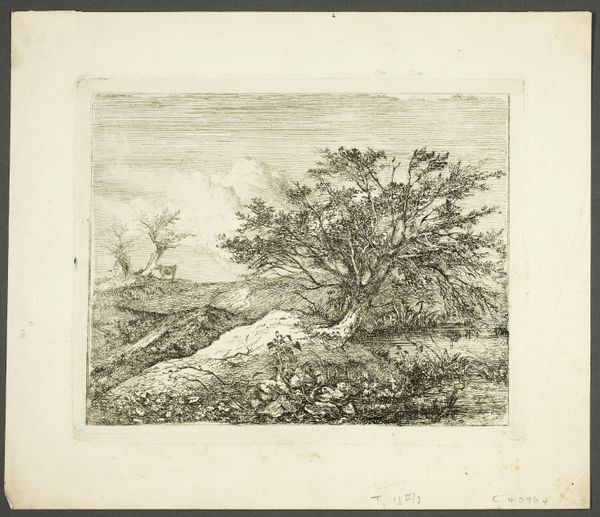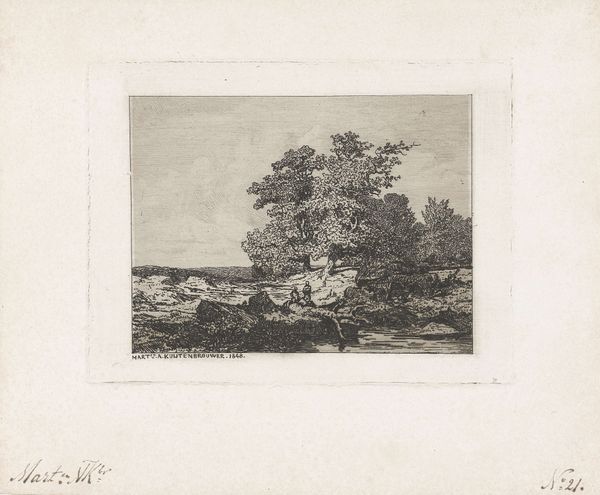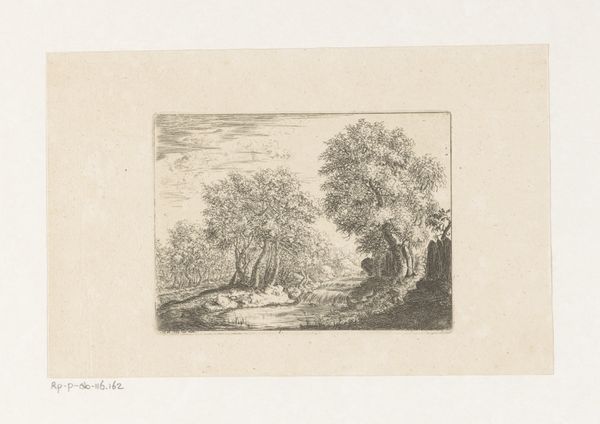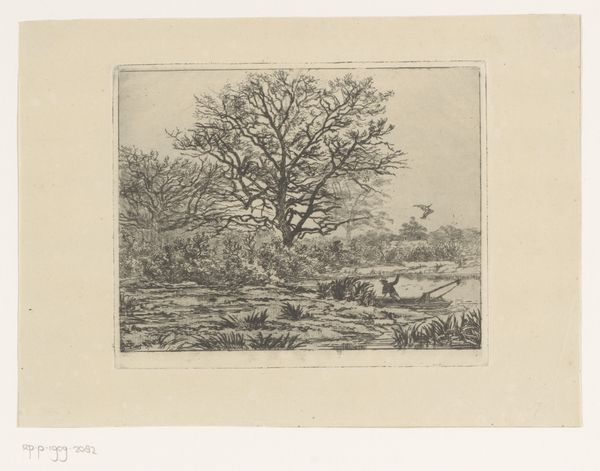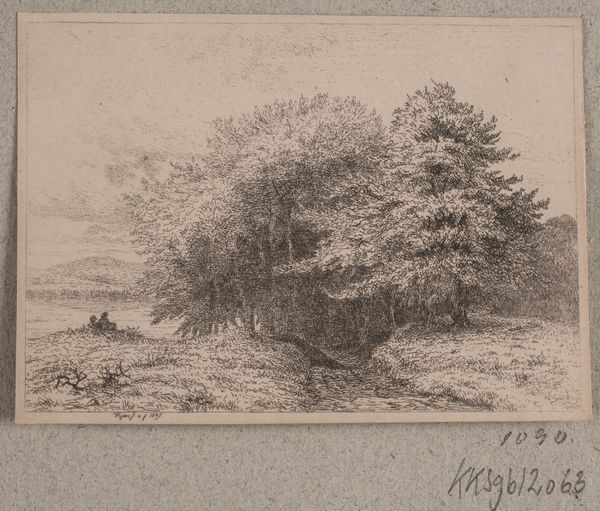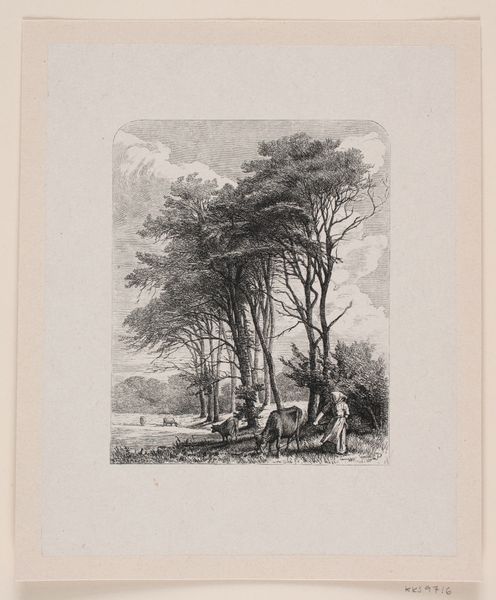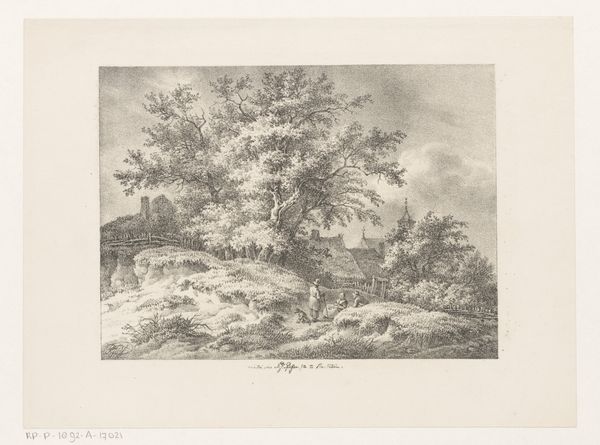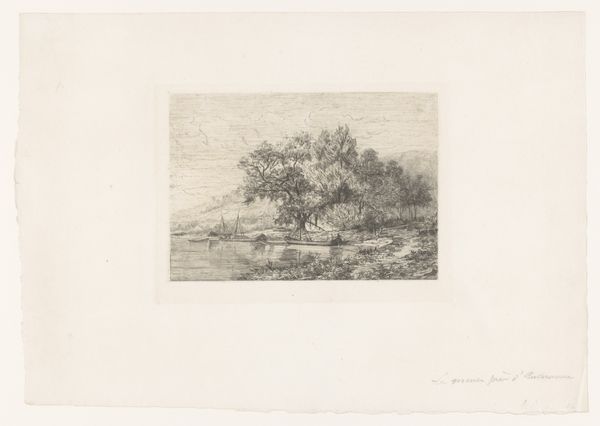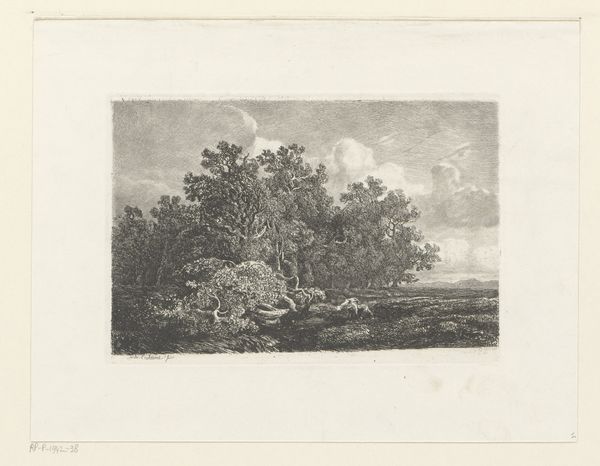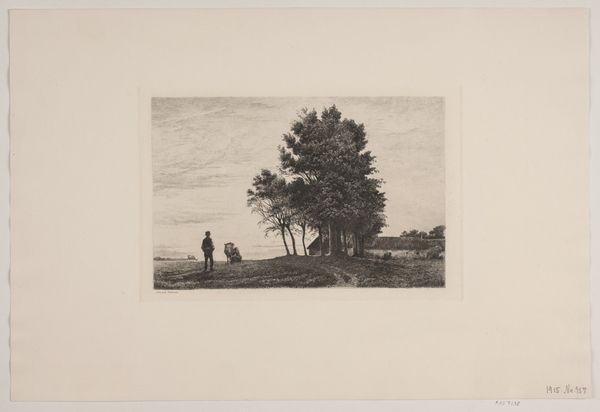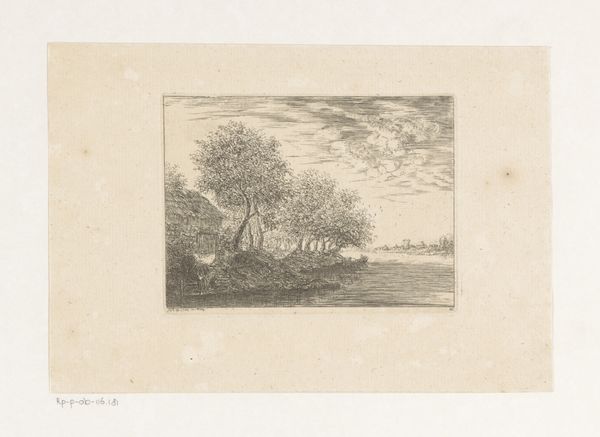
print, etching
# print
#
etching
#
landscape
#
romanticism
Dimensions: 90 mm (height) x 115 mm (width) (plademaal)
Vilhelm Kyhn made this print, Udkant af en skov, using a metal plate to transfer the image onto paper. The technique is called etching: the artist covers the plate with a waxy, acid-resistant ground, and then scratches into it with a needle. The plate is then bathed in acid, which bites into the exposed lines, creating grooves. Ink is applied, filling these lines, and the surface is wiped clean. Finally, the plate and paper are run through a press, transferring the image. Notice how the etched lines define the forms of the trees, the texture of the leaves, and the subtle gradations of light and shadow. The landscape is captured through the skilled manipulation of line, creating depth and atmosphere. Kyhn's choice of etching, a process allowing for multiple reproductions, speaks to the increasing accessibility of art in the 19th century. Rather than a unique painting, this print could reach a wider audience, reflecting the changing dynamics of art production and consumption during the industrial era. It prompts us to consider the social context in which art is made, and how materials and processes shape its meaning.
Comments
No comments
Be the first to comment and join the conversation on the ultimate creative platform.
